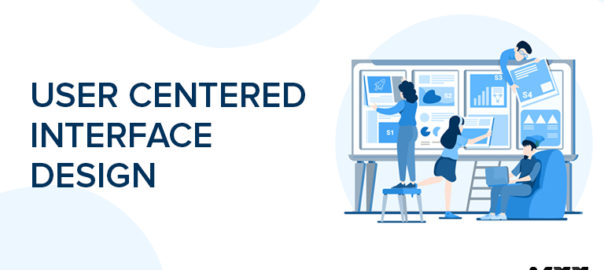Any software, website, application, or other software must have a user interface. User interface design is concerned with the interface’s structure in front of the user. The most effective design is one that does not appear to be one. Yes, you read that correctly; there is no mistake.
UI designdoes not have to look good to operate well. And designs that operate well will look and feel fantastic by default. Many factors influence the creation of such designs. Your target audience, industry, and operational niche are just a few examples.
Creating visually appealing interfaces is critical, but User Interface design services go well beyond that. When using an app, it should be simple to use—you should be able to do your tasks without assistance. On a website or app, you should be able to tell where you are. When you press a button or flick a switch, you should be able to predict what will happen. User Interface designers employ visual clues to assist users through the interface. It also needs to be user-friendly and welcoming. Users should be able to operate and understand the interface regardless of their ability, age, color, gender identity, or background. This could include choosing a font that is easy to read and can be translated into several languages or choosing colors that are visible to color-blind people.
UI Roles and Tasks
As a User Interface designer, you’ll be in charge of creating the appearance and feel of digital products as well as how people will interact with them. This can include a variety of responsibilities and decisions, such as:
- Layouts and the right spacing of page elements on a page
- Existing design environments are being improved and modernized.
- Assuring those designs can be adapted to a variety of device types (adaptive design)
- Button, slider, toggle, icon, drop-down menus, and text fields are examples of interactive components.
- Color palettes, fonts, and typesetting are all things to consider.
- Creating style guides to ensure that the company’s brand identity is constant.
While all of the variables must be considered, there are a few user interface principles or golden standards that may be used to construct designs and direct the designer to the best combination of essentials.
Precision & Prominence:
This may seem obvious, but when we analyze client websites, we frequently find that a large quantity of vital content is misplaced or hidden behind a bad user interface. In a world where your rival is just a click away, you don’t want to confuse your user by forcing them to seek the information they came to your website for because they’ll immediately close the tab and go to your competitor’s. As a result, make sure you understand your clients’ requirements and provide them with vital information that is easily visible and accessible.
Reliability:
This may seem obvious, but when we analyze client websites, we frequently find that important content is misplaced or hidden behind a bad user experience. In a world where your rival is only a click away, you don’t want to confuse your user by forcing them to search for the information they came to your website for because they’ll immediately close the tab and go to your competitor’s website. As a result, ensure that you are aware of your clients’ requirements and that vital information is readily available to them.
Learnability:
Every interface has a design system, and the user should be able to quickly and easily grasp it. Learnability takes into account how much time and effort users will have to put in to become proficient at utilizing the interface and navigating the product. Colour coding, signposting, functions, and symbols are examples of aspects that can help you develop a predictable and intuitive interface in which users can execute fundamental activities the first time they see the design but also find their way around easily when they return.
Simplicity:
A good UI design agency is practically imperceptible to the user; it avoids distracting features, animations, and clicks. Labels and calls to action that employ plain language that guides the user toward completing their goal. Designs that are simple and elegant will never go out of vogue. There are two characteristics of an easy-to-use interface:
- Visual cues: It’s important to let the user know where they are and what they’re interacting with. Give them indicators that will make it easier for them to navigate the UI.
- Prediction: When your consumers use the interface, it gives them a sense of being ahead of the game. When you buy a product or create a profile, for example, there are headlines at the top that describe the procedure. When users click the Next button, it informs them of what will happen next.
Feedback
This is where the user and the UI communicate:
- I’m not sure where I am.
- Is it still downloading?
- What will happen next in the future?
- What happened in terms of outcomes and outcomes?
Providing feedback reassures the user that they are on the correct track, and they will most likely continue! As a result, create unambiguous feedback for every action the user is likely to take; examples of good feedback include green ticks, red crosses, page navigation, and confirmation notifications.
We’re all attracted to a well-designed website. However, the truth is that, in the end, a site’s visual aesthetics will almost certainly have little bearing on its success or failure. If a site looks excellent, it captures my interest, and we can enjoy the design, but it quickly boils down to whether the site can perform what I want it to do for me. The usability and utility of a website are important considerations in determining its success. Of course, content is king, but it must be found and accessed.
So, in your current and future projects, we hope you will consider these five golden principles of User Interface designers. Contact Us today to get started.
Read more about designing effortless user interface designs here.



